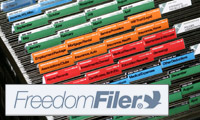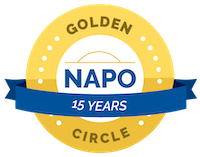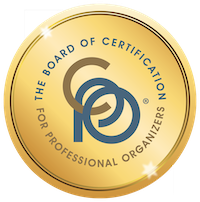Creating a buffer

Taylor and Miranda at Multnomah Falls
I just spent a week with my 20-year-old niece and 17-year-old nephew, which was a rare treat. They live in Australia, so I don’t see them often. In fact, the last time was when I visited them in Australia in 2009. They’ve grown up a lot since then.
It was delightful. They’re active, articulate and incredibly polite young people. We ended up with a theme word, one that kept coming up over and over: buffer.
Miranda, a recent college graduate about to embark on a new job, has always been very busy with a multitude of activities and responsibilities. Miranda and Taylor told me that their mother is always urging her to build in a buffer. She schedules herself to the minute, not allowing any time for slippage. Sometimes (most of the time, I think) that can lead to stress.
She and I share an aversion to getting places early, something I’m trying to change. (I really do like having a buffer!) I told her about the time I was almost killed because I was running late and tried to reinforce my sister-in-law’s message of building in a buffer.
Taylor, as is probably typical for teenage boys, likes to sleep until the last possible second. He says he’s actually able to get out of the house within five minutes of getting out of bed. Ensuring that Taylor was up in the morning early enough to get out in time for the two flights he had to take was another way that buffer entered the conversation.
I think that life is easier when we minimize stress. One way to do that is to build in a buffer around activities so that we’re not running around. In the past, I’ve tried to think of that as giving myself the gift of being early. You can read some of my tips for getting places on time in this Gimundo guest post.
Thanks to the time I spent with Miranda and Taylor, I’m switching it up. Now I’ll just repeat the theme word, buffer, when I want to remind myself of the benefits of not scheduling too much in too short a period of time. The word resonates with me and will be a helpful reminder!
Worth repeating: Getting past internal barriers
I originally wrote and published this post in February 2011. I’m happy to say that my internal barriers to doing Quickbooks have pretty much vanished, though I still have some trouble making it a priority. (But at least I don’t dread it.) Perhaps you have some internal barriers that are getting in your way. If so, I hope you’ll find this helpful.
This the year that I’m all about creating new habits and routines. (At least so far.) In the past two months I’ve created strong habits surrounding cleaning up my yard and keeping the bedroom bureau top clear of clothing. I’ve also whittled my email inbox down to zero every day since January 2. (I’ll blog more about that another day.)
There’s one habit I’ve been meaning to cultivate for years. (Literally, years.) And that’s entering my financial data for my business into Quickbooks on a very regular basis. In December 2009, I blogged that I wanted to adopt that habit for 2010. Did I succeed? Ha! I found myself entering data for most of 2010 in January of 2011, all the while saying to myself, like I do every year, “This year will be different.”
I realize it’s only February 2 (happy Groundhog Day for those in the US!), but I’m excited to report that I’m caught up on Quickbooks and I’m indeed entering data as I earn and spend money. How have I been able to do this after years of failure?
I turned to my secret weapon, Shannon Wilkinson. Shannon is an amazing life coach, hypnotherapist and NLP practitioner. (She’s also my partner in Declutter Happy Hour and Why Resolutions Don’t Work.) For years, she’s been helping me get past my emotional barriers to action.
When I realized that I had some sort of barrier preventing me from facing my finances on a regular basis, I pulled out Boring Change: No Augers Required, Shannon’s amazing (and amazingly affordable) audio and e-book product that puts her brand of magic in your hands. I blogged all about it last March, when it first came out.
I spent just about 10 minutes with Boring Change and when I was through I was ready and raring to start entering data. And I continue to be excited. In fact, the other day when I looked over my to-do list, entering data into Quickbooks felt like a treat! When I realized that, I almost fell off my chair.
If you feel like something is stopping you from doing what you want or from achieving you know is desirable (or simply creating a new beneficial habit), I urge you to give Boring Change a try. It’s only $47 and it can make a huge difference in your life.
Choosing a label maker
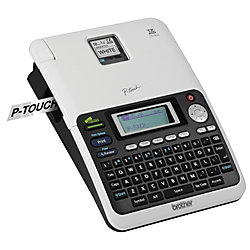
Labels are an important step in the organizing process. They help you establish a place for everything. They help you identify categories. They help you remember.
Most organizers I know have a label maker of some sort. They’re not required certainly. There are many ways to make labels, some of them less cumbersome than using a label maker. (There are some ideas in this post).
But I do love my label makers. (I have two.) I love their ease of use. And I love the professional-looking, tidy, uniform labels they create. I’m sometimes asked what to look for in a label maker, so I thought I’d share my suggestions.
First, I’ve always had Brother P-Touch label makers. I know that Dymo makes good label makers too. (And I have fond memories of my handheld turn-the-wheel-and-squeeze Dymo label maker of my youth.) But Brother’s P-Touch label makers have always been more than satisfactory to me.
I have the PT-2030, which I think is a terrific label maker. I see that it’s been discontinued, unfortunately. I’m sure ones with similar features are available. I also have a ten-year-old (or perhaps even older) PT-1800, also discontinued. (In case you’re wondering why I have two, one lives in my organizing bag that I take to clients. The other lives in my office for use there.)
The PT-2030 has the ability to do fancy frames and also has some pre-loaded labels. Frankly, I rarely use those features. The PT-1980 is more of a no-frills workhorse. It has just the right number of features as far as I’m concerned.
Size is important to me. I’m a bit of a Goldilocks when it comes to label makers. I think they should neither too big nor too small. Mine are just right. My size requirements mean that I buy desktop, not handheld models.
Here’s what I look for in a label maker:
- Full QWERTY keyboard
- A keyboard large enough to type on with two hands
- Device small enough to hold with one hand while hunting and pecking with the other, when necessary
- Adjustable font size
- Adjustable tape margin size
- Ability to use different width tape cartridges
- Easy to switch fonts and sizes
- Easy-to-read screen
Here are features of a label maker that would make me reject it:
- A keyboard that’s arranged alphabetically (so time-consuming for me to use!)
- Non-laminated labels
- Multiple steps to change the font or font size
The thing that amazes me is how many different models there are and how different they are from one another, even within the Brother P-Touch brand. On a team job, I like all the labels my team makes to match. Even though virtually all my team members carry label makers with them, each different device seems to print a slightly different label. The solution to that is to use one label maker, which sometimes is inefficient.
As I said, you don’t need a label maker, because there are all sorts of other ways to create labels. But if you want one (and you have a use for it), I hope that these suggestions will help you choose one.
Worth repeating: Five ways to make packing easy
I’m leaving early tomorrow morning for a week-long trip and need to plan and execute my packing today. Happily, I have a system that makes it easy for me. This post, which I originally wrote last year, is a handy reminder, so I thought I’d share it again.

I travel every month or two and over the years I’ve managed to make packing fairly stress free. There are five practices that I’ve adopted that have helped make packing a piece of cake.
- I put together my outfits before I pack. I detailed my method in this blog post on avoiding overpacking but the basic point is that I plan my outfits before I pack and I don’t bring any more clothes than those that are needed for the outfits. It makes it easier to get dressed during the trip, too, since the decisions have already been made.
- I limit my shoes. I know, I know. That’s tough. But shoes are heavy and space-consuming. I try hard to bring no more than one or two pairs of shoes or boots beyond the pair I’m wearing while traveling.
- I keep a travel set of toiletries. I have travel-sized version of almost all my toiletries and they live in my toiletries kit. This way I save time packing and I don’t have to stress about forgetting something.
- I take only the makeup I need. It’s not practical for me to keep a travel set of makeup (it would go bad before I could use it up), but I just pack it into a makeup kit as I put it on the day of travel. Unless I’m going to a super-fancy event on my trip, I just take along this everyday makeup, not a whole bunch of different shadows or potions to choose from when I’m at my destination.
- I use a travel jewelry case. The Clos-ette Too Travel Jewelry Case makes it easy for me to take along what I need (and no more) and to see what I have brought. It also prevents my necklaces from getting tangled.
There are plenty of things to stress out about when traveling. Packing needn’t be one of them. By making decisions in advance and limiting my choices when I’m traveling, I make the process easier—and my bag lighter.
Photo by Susana Fernandez via Flickr
Labels in the refrigerator?
I love labels and I talk about their value all the time. Recently, I wrote on Organize Your Family History that when I see a failed organizing system in a client’s home, I almost always notice the absence of labels.
Labels help you clarify categories and make it easier for you and the people in your home to find and put away items.
When I bring in an Operation: Peace of Mind team, I always try to make sure we label everything so that the client has no difficulty adapting to his or her new organizing systems.
At a recent session, we had the delightful opportunity to go whole hog when the client asked for labels inside the refrigerator. Working with the client, we created zones for various categories of items and came up with labels that were meaningful to the client.
Check out these photos of each refrigerator door:
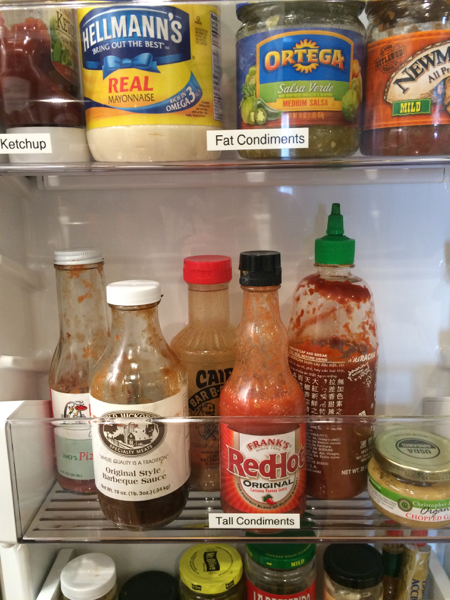
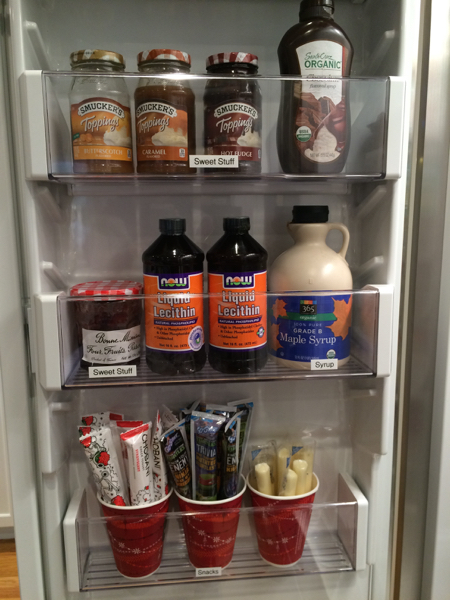
The main area of the refrigerator was fully labeled as well. I’m afraid my photos don’t allow you to read the labels easily. But you can get the idea of how many zones/labels we created.
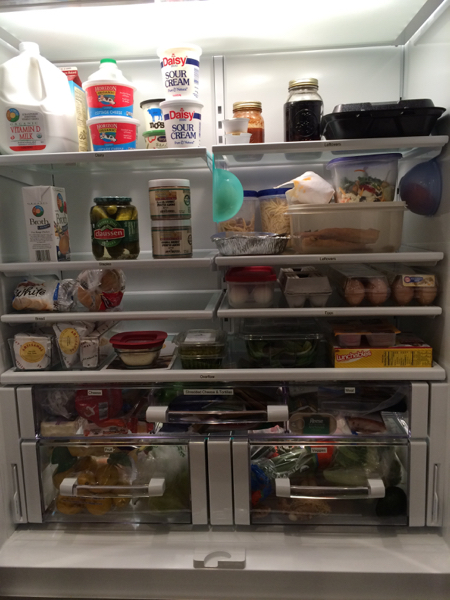
A couple of days after the session, my client shared this with me:
I didn’t realize just what a benefit the labels and zones would be. The labels enforce the organization, and the zones really help with the grocery shopping! I took that mental picture to the grocery store last night. Labels in one’s fridge somehow seem weirder than labels other places, but I’m realizing it makes more sense than anywhere!
About six weeks later, she wrote:
I find myself automatically putting stuff in the right place in the fridge if I find things where they don’t belong.
As a professional organizer, that is music to my ears!
I’ve never wanted to put labels in my own refrigerator. It seemed a little hyper-organized, plus I knew it would make my husband feel constrained. However, after seeing this client’s refrigerator and hearing how well it’s working for her, I have to admit I’m tempted!
What about you? Do you have labels in your refrigerator? If not, does it appeal to you?
Worth repeating: Bingo anniversary
Back in 2011, I created a Bingo board to help me get non-urgent tasks done on a regular basis. I blogged about it four or five times and today have selected one of the most useful of those posts to repeat to spread the word about the value of building fun into your task management.

Here's how my bingo board looks today.
A year ago today, I first blogged about To-Do List Bingo. I created a bingo board after reading a blog post about social media bingo from my friend, Jacquelyn Kittredge of e-bakery.
I use my bingo board to help motivate me to do important, but not urgent, tasks on a daily basis. For me, that’s social media stuff, contacting past, prospective and current clients, pursuing guest post or speaking opportunities, doing family history research, and working on my new blog, Organize Your Family History.
Every time I do one of those things, I cover the space on the board. (I reshuffle the cards on the board every day.) At the end of the day, I take a look at the board and see what I need to do to get a bingo. And that’s usually motivation enough for me to do those tasks.
I love my bingo board for a bunch of reasons:
- It’s pretty
- It’s fun
- It’s flexible
- It gives me a sense of accomplishment for doing a bunch of small tasks
- It helps me get stuff done!
When I first started, I used Post-It® notes to cover up the spaces. That was visually unappealing and sort of fiddly (because sometimes they’d fall off), not to mention wasteful. A couple of months ago, I created decorative magnets by cutting out drawings of buttons from a calendar. Yesterday, I made a second set because I’ve been covering so many squares.
With the new magnets, the board has become even more satisfying for me. I just love it.
I’ve actually become sort of a proselytizer for To-Do List Bingo. I’ve blogged about it several times and I wrote an Organizing Guide about it, called TO-DO LIST BINGO! A game of completion + glee, for the whole family. In August of last year (after I’d been using it only a month!), I took my board on the road and did a segment on Great Day St. Louis, a local morning talk show.
These days, I’ve been getting triple and quadruple bingos on a regular basis and it makes me so happy. Sometimes people ask me what reward I get for getting a bingo and they seem surprised that the thrill of the bingo is reward enough for me. I guess I’m weird that way. (Certainly rewards could be attached to it, though.)
SpareFoot's 12 decluttering blogs you should be following right now
The SpareFoot Blog, a blog published by SpareFoot, an online self-storage finding tool, has come out with its top 12 Decluttering Blogs You Should Be Following Right Now. I’m delighted that the Peace of Mind Organizing blog is one of them!
The other blogs listed are:
- Clutter Busting with Brooks Palmer
- Becoming Minimalist
- The Seana Method
- A Bowl Full of Lemons
- List Producer
- A Slob Comes Clean
- Smart-Happy-Organized
- Simplified Bee
- Life Is Organized
- Simply Organized
See the list on the SpareFoot blog for direct links to the blogs and to read a short description (written by the blog owners) of each blog and its purpose.
I feel very honored to be in such great company!
Search
Recent Posts
- Budgeting and decluttering: It's all about priorities
- Today's truth bomb
- Worth repeating: Labels in the refrigerator
- The meat of my Bullet Journal
- Worth repeating (again): Getting past "I might need it some day"
- Furthering your goals one tiny step at a time
- Repeating spreads in my Bullet Journal
Tags
Links
- Getting to Good Enough podcast
- National Association of Productivity and Organizing Professionals
- Institute for Challenging Disorganization
- Organize Your Family History
- Peace of Mind Spending
- NAPO St. Louis
- Ravelry
- Shannon Wilkinson, life coach
- Are you interested in becoming a professional organizer?




